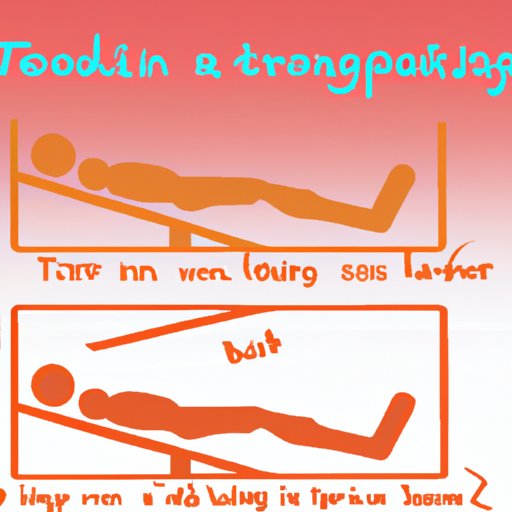Introduction
Tanning beds and sun exposure are two ways to achieve a golden brown complexion. Tanning beds use ultraviolet (UV) light to create a tan, while sun exposure relies on natural UV radiation from the sun. It can be difficult to decide which option is better for you, so we’ll compare the pros and cons of each to help you make an informed decision.
Comparing the Pros and Cons of Tanning Beds Versus Sun Exposure
Both tanning beds and sun exposure offer advantages and disadvantages. Let’s take a look at the pros and cons of each to help you decide which one is right for you.
Advantages of Tanning Beds
When it comes to tanning beds, there are several advantages that make them attractive. First, they provide faster results than sun exposure. This means that you can get the desired color much faster than if you were to rely on natural sunlight. Additionally, tanning beds allow you to control the intensity of the tan. This means that you can adjust the UV light depending on how dark you want your tan to be. Finally, tanning beds require less time in the sun, so you don’t have to worry about spending hours outdoors to get the perfect tan.
Disadvantages of Tanning Beds
However, there are also some drawbacks to using tanning beds. The most obvious is the potential health risks of overexposure. When you use a tanning bed, you’re exposed to higher levels of UV radiation than you would be when relying on natural sunlight. This can increase your risk of skin cancer, as well as other health issues. Additionally, overexposure to UV radiation can cause skin damage, such as premature aging and wrinkles. Finally, tanning beds can be expensive, especially if you use them frequently.

Examining the Health Risks of Tanning Beds
One of the biggest concerns about tanning beds is the potential health risks associated with them. The most serious of these is skin cancer. Studies have found that people who use tanning beds are more likely to develop melanoma, the most dangerous form of skin cancer. Other potential health risks include eye damage, burns, and dehydration.

Exploring the Different Types of Tanning Bed Technology
There are several different types of tanning beds available, each with its own advantages and disadvantages. UVA beds are the most common type and emit primarily UVA rays, which penetrate deeper into the skin and cause a longer-lasting tan. UVB beds emit primarily UVB rays, which don’t penetrate as deeply but cause a more intense tan. Combination beds are a mix of UVA and UVB rays, while high pressure beds use a combination of UVA and UVB but also emit additional wavelengths of light.
Tanning beds also come with a variety of safety features. For example, many beds are equipped with timers to ensure that users don’t overstay their session. Additionally, many beds have built-in cooling systems to prevent users from overheating. Finally, many beds also come with eye protection to protect users from UV radiation.

Investigating the Cost Comparison of Tanning Beds Versus Sun Exposure
The cost of tanning beds and sun exposure can vary greatly depending on where you live and how often you plan on using either option. On average, tanning beds cost around $20-30 per session, while sun exposure can cost anywhere from free to hundreds of dollars for sunscreen and other protective gear. Ultimately, this cost comparison depends on your individual needs and budget.
Analyzing the Effects of Tanning Bed Use on Skin Damage
Tanning beds can cause skin damage if used improperly or too often. This damage can range from mild redness to severe burns. To prevent this, it’s important to follow the instructions provided by the manufacturer and use the proper safety measures. Additionally, it’s important to limit your tanning sessions to no more than once a week, as overexposure can lead to skin damage.
Understanding the Benefits and Drawbacks of Tanning Beds Versus Sun Exposure
When it comes to tanning beds versus sun exposure, there are both benefits and drawbacks to consider. Tanning beds offer quicker results and more control over the intensity of the tan, but they can also pose potential health risks and cause skin damage from overexposure. Sun exposure is generally safer, but it can take longer to achieve the desired color and may require more time in the sun.
Conclusion
In conclusion, tanning beds and sun exposure both have their advantages and disadvantages. Tanning beds offer faster results and more control over the intensity of the tan, but they can also pose potential health risks and cause skin damage from overexposure. Sun exposure is generally safer, but it can take longer to achieve the desired color and may require more time in the sun. To ensure safe tanning practices, it’s important to follow the instructions provided by the manufacturer and use the proper safety measures.


